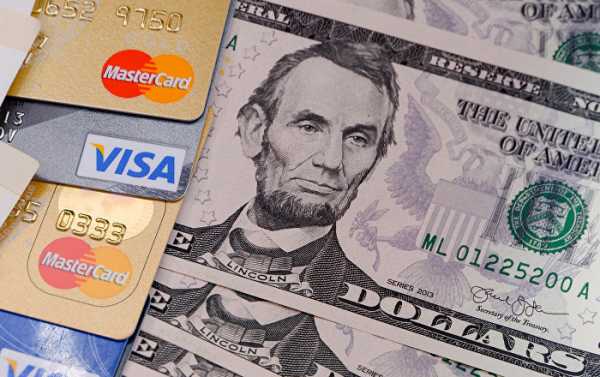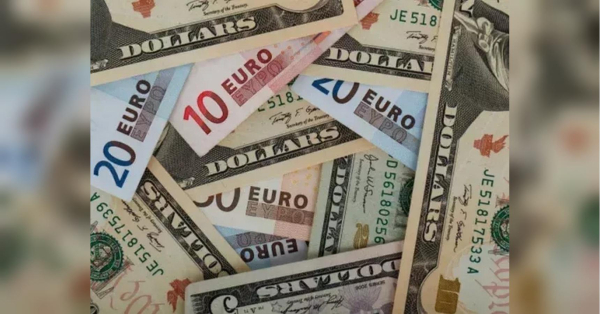
Russia has been implementing a comprehensive plan to diminish the country’s reliance on the dollar as a proactive measure amid the Trump administration’s sanctions spree. Moscow is not alone in seeking to de-dollarize its economy. Market players from Europe to Asia are increasingly switching to national currencies.
The de-dollarisation of the Russian economy is under way and the US cannot help but notice the process.
On November 11, The Wall Street Journal highlighted that Russia “demotes the dollar’s role at home” and increasingly executes trade deals in roubles and other currencies, preparing for tougher sanctions expected later this month. The media outlet pointed out that “tax incentives are being considered for exporters that shun the dollar.” Additionally, earlier this year the Russian Central Bank stepped up its gold reserves and got rid of the larger part of US bonds, the report summarised.
Meanwhile, over the last three years the share of foreign currency deposits has dwindled from 37 per cent in 2016 to 26 per cent this September, according to the Central Bank. At the same time, the share of dollar-priced export revenues shrank from more than 80 per cent in 2013 to 68 per cent in the second quarter of 2018.
The aforementioned measures and trends clearly indicate that Moscow is putting its words about the de-dollarisation of the country’s economy into action.
The four-part plan was outlined by Andrey Kostin, the president and chairman of VTB Bank’s management board, in mid-September and endorsed by the Russian Ministry of Finance.
Kostin’s grand design envisaged accelerating the transition to export-import transactions in euros, yuan or rouble, transferring Russia’s largest holdings from abroad to the country’s jurisdiction and creating a Russian depository to place Eurobonds. In addition, he proposed licensing all participants of the stock market to ensure that they work according to the same rules.
Russian Finance Minister Anton Siluanov hailed the initiative in early October, underlining that the US dollar had become an unreliable tool for payments in international trade due to Washington’s assertive trade policies and sanctions spree. According to Deputy Finance Minister Alexey Moiseev, the de-dollarisation plan will be published by the end of the year.
His comment came on the heels of Russian President Vladimir Putin’s remark at Russian Energy Week 2018 that the Americans “are making a colossal strategic mistake, they are undermining confidence in the dollar as a universal, in fact, the only reserve currency today, undermining faith in it as this universal tool.”
Nations From Europe to Asia Switching to Non-Dollar Trade
Russia is not the only market player concerned about the dependence on the greenback. Speaking to CNN on November 11, French President Emmanuel Macron pointed out that European corporations were too dependent on the US currency.
“This is an issue of sovereignty for me. So that’s why I want us to work very closely with our financial institutions, at the European levels and with all the partners, in order to build a capacity to be less dependent from the dollar,” Macron said, adding that the EU has so far failed to make the euro as strong as the greenback.
In late October, another American ally, Japan, signed a $75 billion bilateral currency swap agreement with India, switching to national currencies in mutual trade.
Besides, US sanctions imposed on Iran’s oil, shipping and banking industries have prompted the EU to seek an alternative to the Society for Worldwide Interbank Financial Telecommunication (SWIFT) controlled by the US. The idea was enthusiastically discussed by German Foreign Minister Heiko Maas and EU Foreign Affairs Chief Federica Mogherini.
For its part, China has long been seeking ways to reduce reliance on the dollar in energy trade and ramp up the yuan’s positions. To this end Beijing has long been accumulating gold and launched renminbi-priced crude futures in March 2018.
It was reported that Russia and China may sign an agreement on settlements in national currencies by the end of 2018, while Russia’s largest bank, Sberbank, signalled that it was ready to develop yuan-denominated loans for Russian companies.
Moscow and New Delhi’s decision to settle the $5 billion Russian-Indian S-400 deal in roubles, partly due to the US sanctions threat, has come as the icing on the cake.
In addition to Russia, China, Iran and India, Venezuela, Turkey and Pakistan are stepping up non-dollar trade. While Turkey, Iran and Venezuela have seen a tremendous slump in their currencies’ value, Islamabad has a good reason to switch to the yuan in bilateral trade with China, being a crucial part of the Beijing-led One Belt, One Road initiative.
Russian economists feel confident about the prospects of de-dollarization: “The rouble is a stable currency as a whole,” Russian Economic Development Minister Maxim Oreshkin told the newspaper Izvestia, commenting on the Sino-Russian non-dollar trade plan. “Macroeconomic policies, including inflation targeting and budget rules that are implemented in our country, affect the rate more.”
Sourse: sputniknews.com






